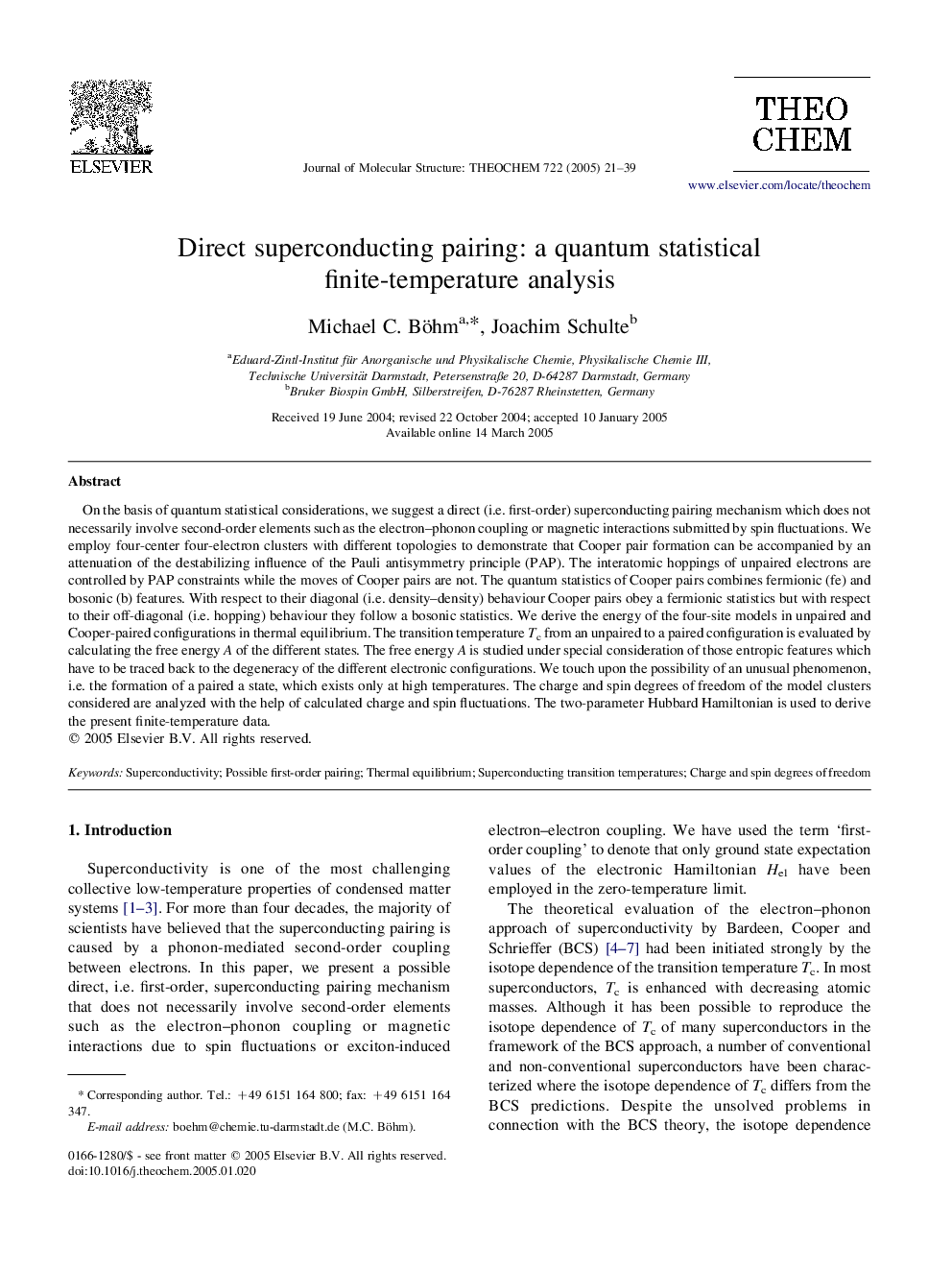| Article ID | Journal | Published Year | Pages | File Type |
|---|---|---|---|---|
| 9591319 | Journal of Molecular Structure: THEOCHEM | 2005 | 19 Pages |
Abstract
On the basis of quantum statistical considerations, we suggest a direct (i.e. first-order) superconducting pairing mechanism which does not necessarily involve second-order elements such as the electron-phonon coupling or magnetic interactions submitted by spin fluctuations. We employ four-center four-electron clusters with different topologies to demonstrate that Cooper pair formation can be accompanied by an attenuation of the destabilizing influence of the Pauli antisymmetry principle (PAP). The interatomic hoppings of unpaired electrons are controlled by PAP constraints while the moves of Cooper pairs are not. The quantum statistics of Cooper pairs combines fermionic (fe) and bosonic (b) features. With respect to their diagonal (i.e. density-density) behaviour Cooper pairs obey a fermionic statistics but with respect to their off-diagonal (i.e. hopping) behaviour they follow a bosonic statistics. We derive the energy of the four-site models in unpaired and Cooper-paired configurations in thermal equilibrium. The transition temperature Tc from an unpaired to a paired configuration is evaluated by calculating the free energy A of the different states. The free energy A is studied under special consideration of those entropic features which have to be traced back to the degeneracy of the different electronic configurations. We touch upon the possibility of an unusual phenomenon, i.e. the formation of a paired a state, which exists only at high temperatures. The charge and spin degrees of freedom of the model clusters considered are analyzed with the help of calculated charge and spin fluctuations. The two-parameter Hubbard Hamiltonian is used to derive the present finite-temperature data.
Keywords
Related Topics
Physical Sciences and Engineering
Chemistry
Physical and Theoretical Chemistry
Authors
Michael C. Böhm, Joachim Schulte,
